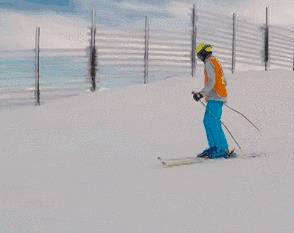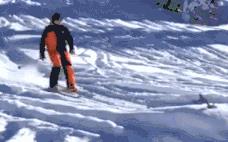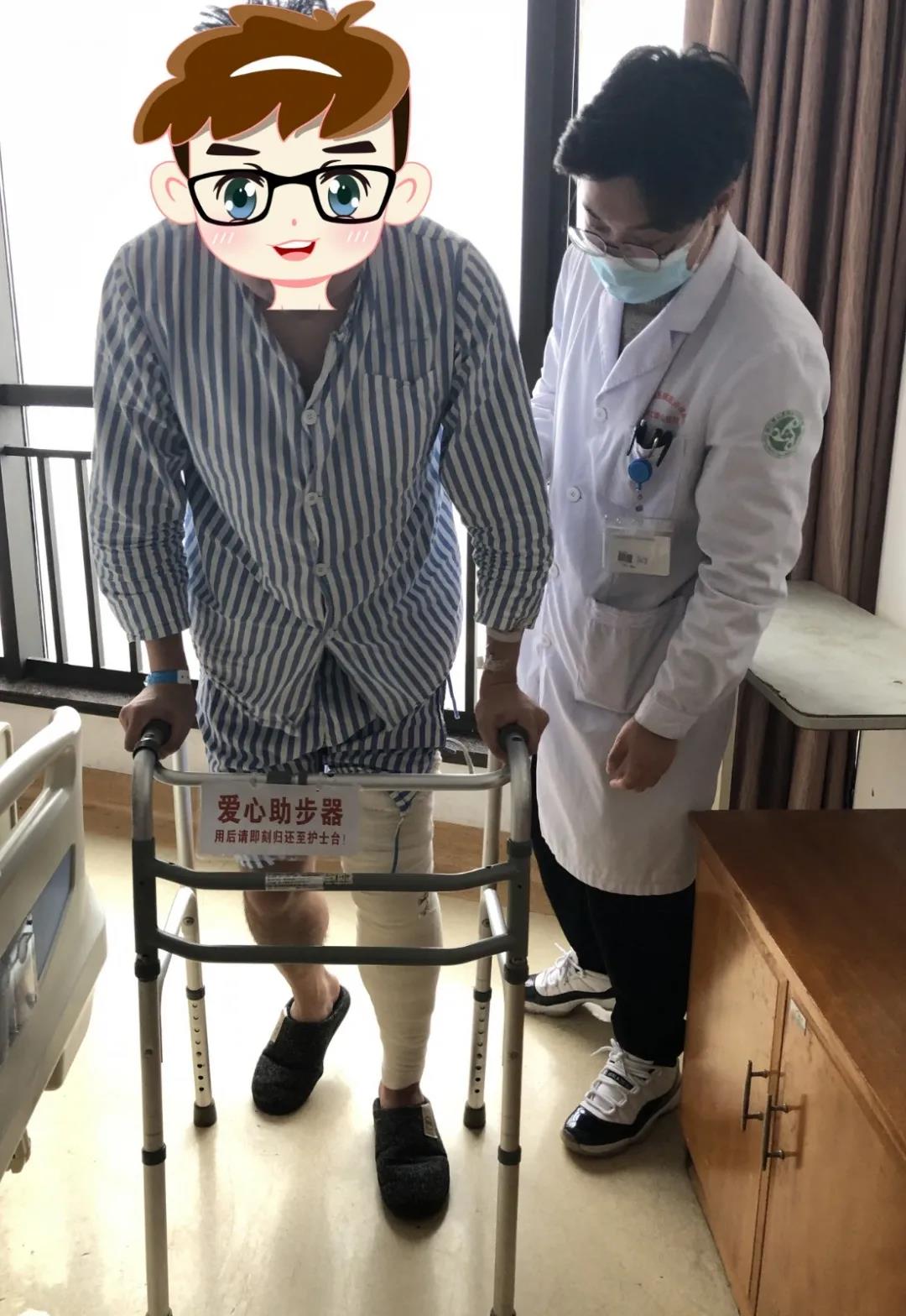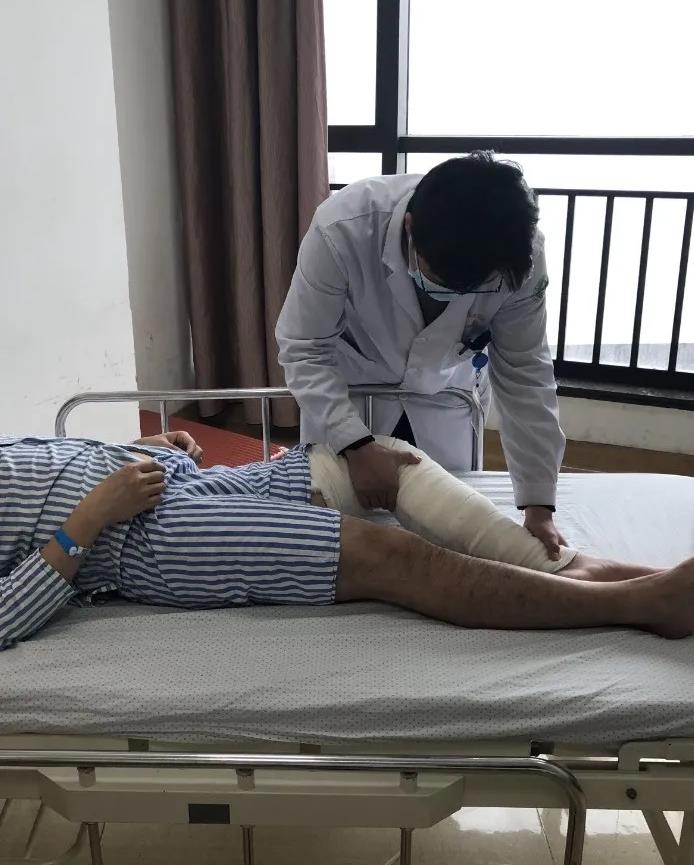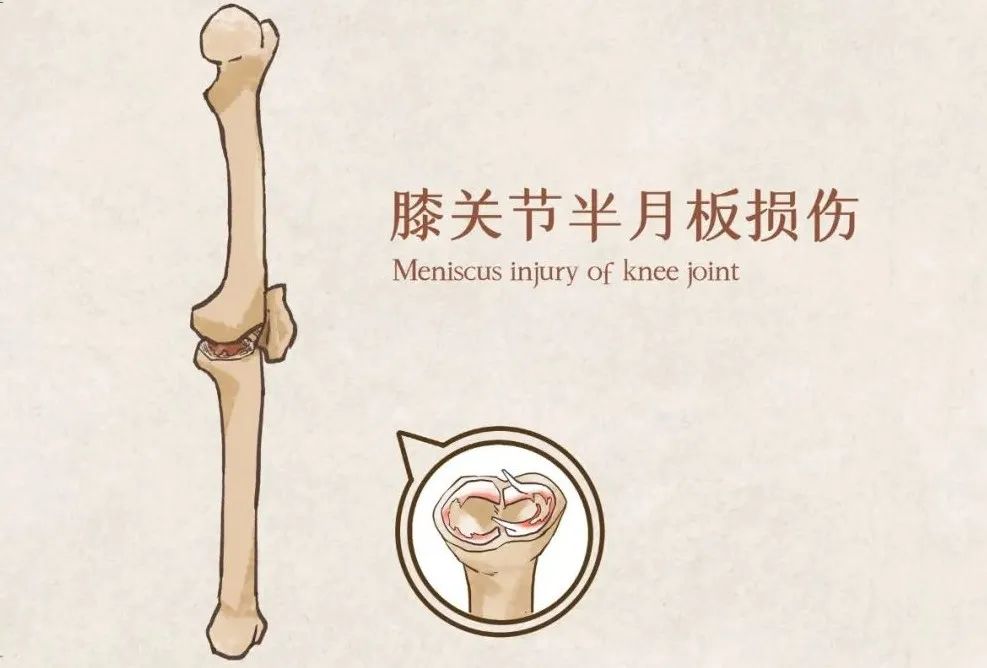In the snow project of the Winter Olympics,
The action of the players on the snow slope is so handsome,
Many people are eager to try: "Why don’t I try skiing?"
Any sport has risks, and skiing is no exception.
Many friends got together because of skiing injuries.
Some people even set up a "snow-season staring group".
When skiing, I accidentally fell down and hurt my knee.
Recently, the Department of Orthopaedics of Xiaoshan Hospital in Zhejiang Province treated a patient who fell on his knee by skiing.Mr. Chen (not his real name) from Ke Qiao, Shaoxing, is a 34-year-old skier. The recent Winter Olympics made him feel excited and made an appointment with his friends to play in a ski resort in Shaoxing.
The animation comes from SOOGIF.
I didn’t know that "the horse lost its front hoof". Mr. Chen accidentally fell down while skiing, causing swelling and pain in his left knee joint. He couldn’t walk smoothly, and he didn’t get better after resting at home for two days.
Director Hong Junyi of the Second Orthopedic Ward conducted a careful physical examination on Mr. Chen, and arranged an MRI (Magnetic Resonance) examination on the injured part. Finally, he was diagnosed as Mr. Chen.Meniscus injury of left knee joint combined with medial collateral ligament injuryYou need surgery to recover.
The operation went smoothly. Because it was a minimally invasive arthroscopic operation, Mr. Chen was able to go to the field the next day after the operation, and he is now actively recovering.
Is orthopedics at the end of the snowy road? Not without reason
"The statement that’ the end of the snowy road is orthopedics’ is a joke, but it makes sense. Because ice and snow sports are really easy to cause knee ligament and meniscus damage. "
The most common part of skiing is the knee joint, among which meniscus injury is more common.
Meniscus is one of the main structures of the knee joint. In skiing, injuries often occur when people suddenly change direction or bend their knees. At this time, the limit of the mechanical bearing capacity of meniscus tissue is broken and it is easy to be injured.
The injured often feel sudden swelling and pain in the knee joint, unable to stand and move, and even have a feeling of strangulation and stagnation, and generally unable to continue exercising..
Treatment of knee joint injury by PEACE&LOVE method
In winter, the sensitivity of human joints decreases, and sports injuries are more likely to occur in cold environments. Experts teach you a trick. If knee joint injury happens unfortunately, for mild joint injury, you can refer to the following PEACE&LOVE ways to deal with it:
Principles of "PEACE" in acute stage
"p"-pay attention to protection(Protection): Take protective initiative to the injured joint to reduce bleeding and avoid aggravating the injury.
"E"-Elevate the injured area(Elevation): Elevate the injured part above the level of the heart.
"A"-Avoid using anti-inflammatory drugs.(Avoid anti-inflammatory drugs): It can be used for local cold compress to stop bleeding and reduce swelling, avoiding the use of non-steroidal anti-inflammatory and analgesic drugs.
"c"-pressure dressing(Compression): Use elastic bandage for pressure dressing to limit joint edema and soft tissue bleeding.
"e"-education(Education): Understand the treatment contents and precautions after acute joint injury.
Principles of subacute treatment of "LOVE"
"l"-moderate load(Load): Walk with proper load to strengthen the recovery of tendons, muscles and ligaments around joints.
"O"-optimism(Optimality): An Optimism attitude is conducive to the recovery of functions.
"V"-Keep the blood circulation unobstructed.(Vascularisation): Exercise the injured part as soon as possible under the condition of pain tolerance, increase aerobic exercise, and improve blood circulation and tissue repair of injured tissue.
"e"-Exercise: Scientific and standardized family sports rehabilitation exercise.
Please keep these precautions in mind when skiing!
According to the doctor, skiing and skating are relatively high-speed.
Coupled with the heavy equipment, the damage caused is mostly high-energy damage.
Usually better than ball games, running and jumping, etc.
The severity of the injury is higher,Many people have broken bones.
There are three main reasons for fracture.
The force directly acts on a certain part of the bone and causes the fracture of that part, which is often accompanied by different degrees of soft tissue injury.
When indirect violence acts, fractures occur in the distance through longitudinal conduction, leverage or torsion. For example, when skiing falls from a height and the foot touches the ground, the trunk bends forward sharply due to gravity, and the vertebral body at the junction of thoracolumbar spine may have compression or burst fracture.
Stress fracture is a fracture caused by long-term stress acting on bone, also known as fatigue fracture. The most common manifestations of fractures are pain, swelling, deformity and limited movement of limbs.
Generally speaking, the fractures that occur during exercise are all closed fractures, and the targeted emergency treatment mainly includes fixation and analgesia.
Fracture fixation is beneficial to most injured people. Fixation can prevent fracture displacement or reduction failure, prevent further injury and relieve pain. There are many fixation methods for simple fractures, including splint, plaster, brace, finger sticking (a kind of dressing method) and sling-wrapped bandage fixation. In an emergency, splints are the first choice for fractures with low risk of displacement, mainly because the soft tissue around most fracture sites will swell. If the acute injury site is fixed with plaster, there is no room for swelling tissue, and tissue ischemia, stress injury and even iatrogenic osteofascial compartment syndrome may occur.
Adequate analgesia is also an important treatment for acute fractures. Fracture fixation, ice compress, raising the affected limb and using analgesic drugs are all helpful to relieve pain. After the first aid treatment, the injured should be sent to the hospital in time for further treatment.
Doctor’s reminder
Know the risks before participating in ice and snow sports.
Have a basic assessment of your abilities.
Don’t try difficult moves rashly.
Pay special attention to warm-up activities before exercise.
Wear protective equipment and get familiar with the site and environment in advance.
Strengthen the training of physical fitness and lower limb muscle strength in daily life.
Helps prevent sports injuries.
Don’t try to be brave after injury to prevent secondary injury.
Don’t be careless about preventing sports injuries.
